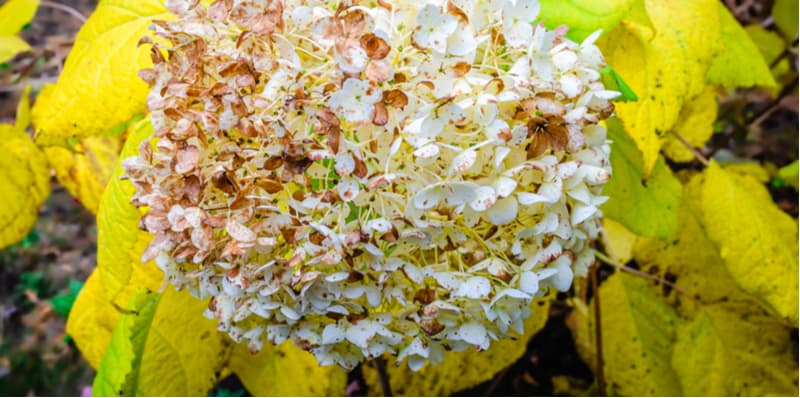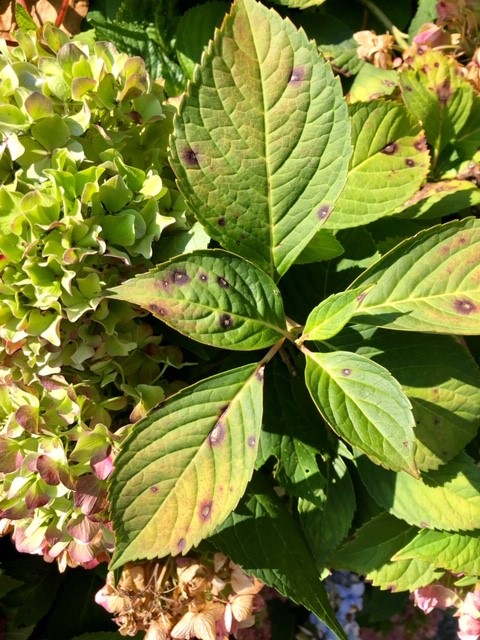Everything about Hydrangea Leaves Turning Yellow
Wiki Article
All About Hydrangea Leaves Turning Yellow
Table of ContentsLittle Known Facts About Hydrangea Leaves Turning Yellow.The smart Trick of Hydrangea Leaves Turning Yellow That Nobody is Talking AboutThe Best Guide To Hydrangea Leaves Turning YellowThe 3-Minute Rule for Hydrangea Leaves Turning YellowThe smart Trick of Hydrangea Leaves Turning Yellow That Nobody is Talking About
Hi men, I took some hydrangea cuttings last Autumn and I potted them on into fresh garden compost about a month ago. Since doing this they have actually gone from a lovely dark environment-friendly to a light yellow! I have checked the garden compost and it doesn't appear extremely wet and neither is it dry.Could any person inform me what might have happened? Many thanks.
The fallen leaves of climbing hydrangea plants (additionally referred to as Hydrangea petiolaris) can turn yellow and brown for factors within or beyond your control. Below are one of the most common reasons and steps you can require to make the vegetation of the climbing hydrangea plant look environment-friendly and healthy and balanced again (Hydrangea Leaves Turning Yellow). Inappropriate watering is normally the main culprit when yellow or brownish leaves begin to develop on Climbing up hydrangea plants
A puddle of water, nonetheless, shouldn't continue to be on the soil after the plant obtains watered as that can motivate root rot to establish and this, in turn, can trigger yellow leaves. Exactly how frequently you sprinkle the climbing hydrangea plant will certainly depend on aspects such as whether you are growing it inside or outdoors and the general humidity, temperature level, and light intensity.
7 Easy Facts About Hydrangea Leaves Turning Yellow Shown
Every one of this can cause leaves to transform yellow and diminish. you will certainly know if the soil is soaked by producing a little opening on the dirt surface area and filling it with water. If the water hasn't drained after a few hours then you are taking care of clogged up dirt troubles.One way of doing this is by mixing the soil with material like perlite, compost, and shredded leaves. Yellow leaves can also form on climbing hydrangea plants due to changes in sunlight conditions. Prolonged exposure to direct sunlight, for instance, can damage plants due to the fact that it can result in sunburn and the scorching of leaves.
Lack of energy would then cause the fallen leaves to shrivel and progressively end up being tarnished. Attempt to position the climbing hydrangea plant or provide it enough cover or direct exposure to make sure that it gets an ideal amount of sunlight, which is concerning a couple of hours of complete sun or partial shade daily.

Little Known Facts About Hydrangea Leaves Turning Yellow.
Hydrangeas typically have green leaves but in many cases they could transform yellow. There are really couple of hydrangeas that have actually been reproduced to create yellow leaves as they age (Hydrangea Leaves Turning Yellow). The Lemon Dad, as an example, will turn yellow as it ages so be cognizant of the selection you have to make sure that you can be planned for what scenarios necessitate all-natural yellow color
Now lots of people recognize that if the plant leaves beginning to wilt it's indicative of dehydration, something that can be easily fixed. If you see your fallen leaves start to wilt and after that transform yellow it could be Fallen leave Scorch. This is most likely the case if the fallen leaves on top of your hydrangea and on the sides would obtain the many sun or the ones turning yellow with brown ideas.
If you see the fallen leaves turning yellow that suggests the disease has actually reached an innovative state. By the end of the summer, the fallen leaves might also transform yellow.

What Does Hydrangea Leaves Turning Yellow Mean?
When you put the blend onto the plant always make certain that you pour at the soil and not on top of the fallen leaves. You can reduce the dirt p, H by applying some ache bark mulch yet make sure you examine the levels of p, H.If you have hydrangeas, you will certainly face the typical trouble of hydrangea leaves turning yellow at some point. browse around this web-site One of the major causes of hydrangea leaves turning yellow is overwatering.

The very first thing you require to do is to quit watering. If the soil is really wet, let it dry. Different selections of hydrangea need a various amounts of water. Generally, hydrangeas require to be sprinkled every 5 to 10 days in dry weather and do not require to be watered at all if it is drizzling.
The Buzz on Hydrangea Leaves Turning Yellow
Otherwise, pierce two or 3 find more openings at the bottom of the pot to make sure that any additional water can drain. The sort of dirt additionally matters. Clay soil can hold wetness for a longer time than sandy dirt. Hydrangeas require well-drained however wet soil. Underwatering, as well, has the very same signs as overwatering.If you continuously fail to remember to sprinkle your plants or water your hydrangea till more than a week has passed, it will certainly bring about discoloration, wilting, and yellow leaves. The very best way to inspect if your hydrangea is underwatered is to examine the dampness levels of the soil. You can just stick your fingers in the soil.
Report this wiki page